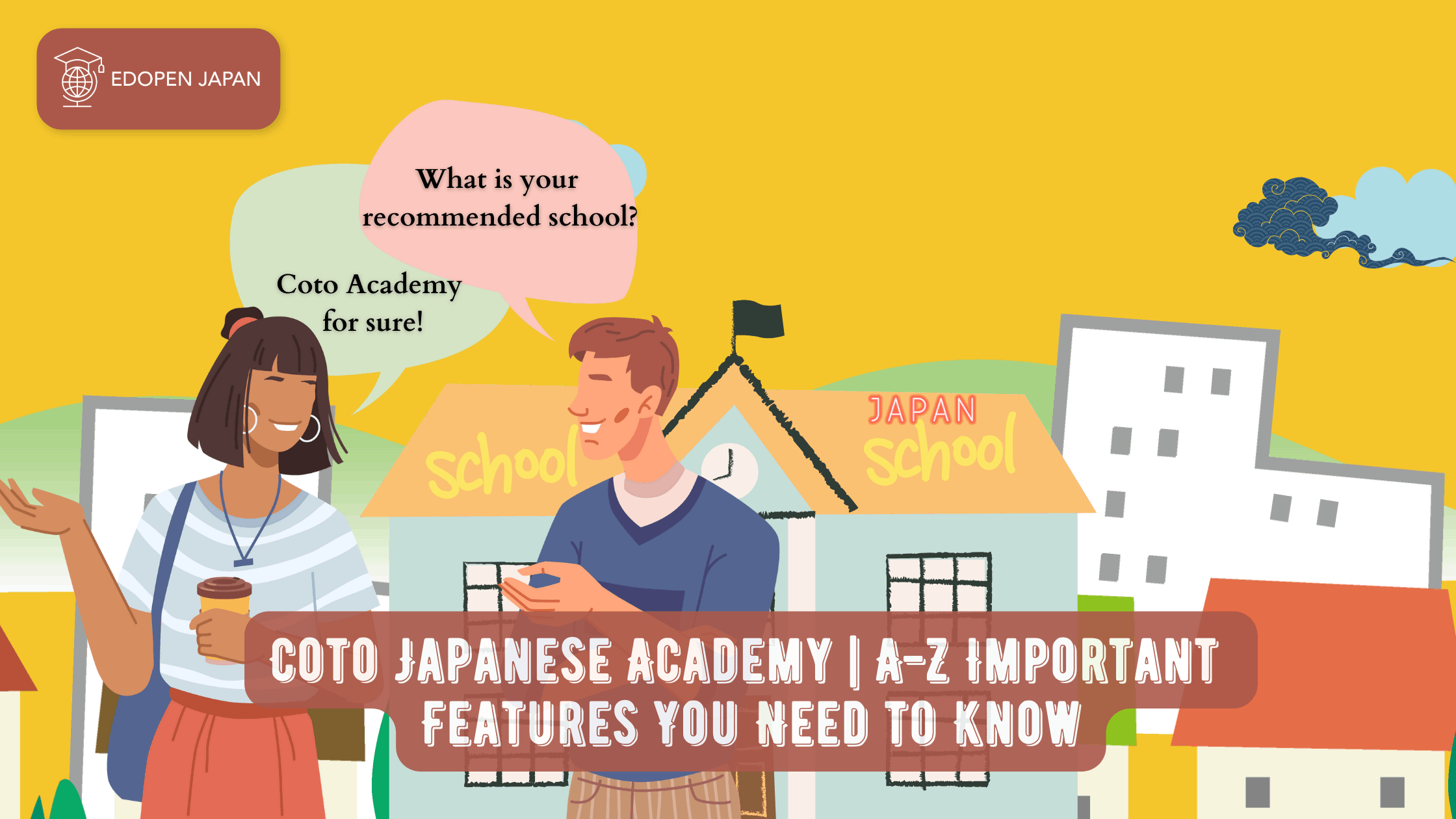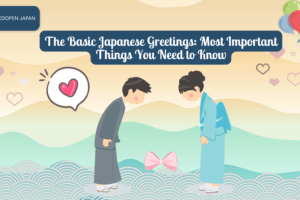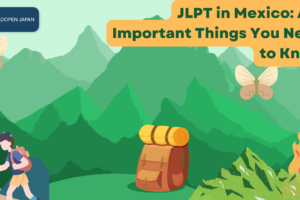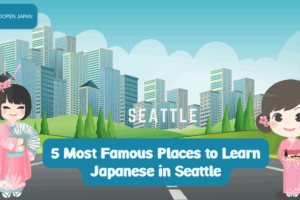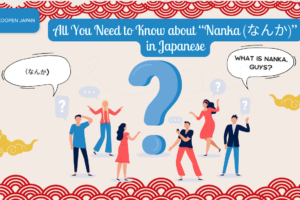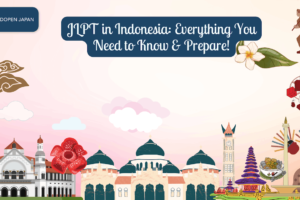Ready for a trip to Japan? Known for its superior “Made in Japan” goods, Japan has a highly advanced economy and is renowned as the safest nation worldwide. Furthermore, Japan showcases a perfect fusion of traditional and modern culture, whilst experiencing all four seasons.
Whether you are seeking to pursue your studies or begin a career in Japan, you will be exposed to the unrivaled traditional Japanese performing arts and pop culture, including manga and anime. One of the initial measures that should be taken to acclimate to life in Japan is to learn Japanese. In Japan, numerous Japanese language schools exist, which may leave you perplexed about your choice.
Coto Academy’s objective is to impart you with authentic Japanese not typically found in textbooks. Thus, please refer to the article below.
Also, For the most comprehensive information on all the top Japanese language schools in Japan, please refer to the resource below.
Explore also:
9 Great Japanese Language Schools in Osaka
10 Popular Japanese Language Schools in Kyoto
9 Best Schools for Learning Japanese in Tokyo
Contents
A Brief Overview of Coto Japanese Academy
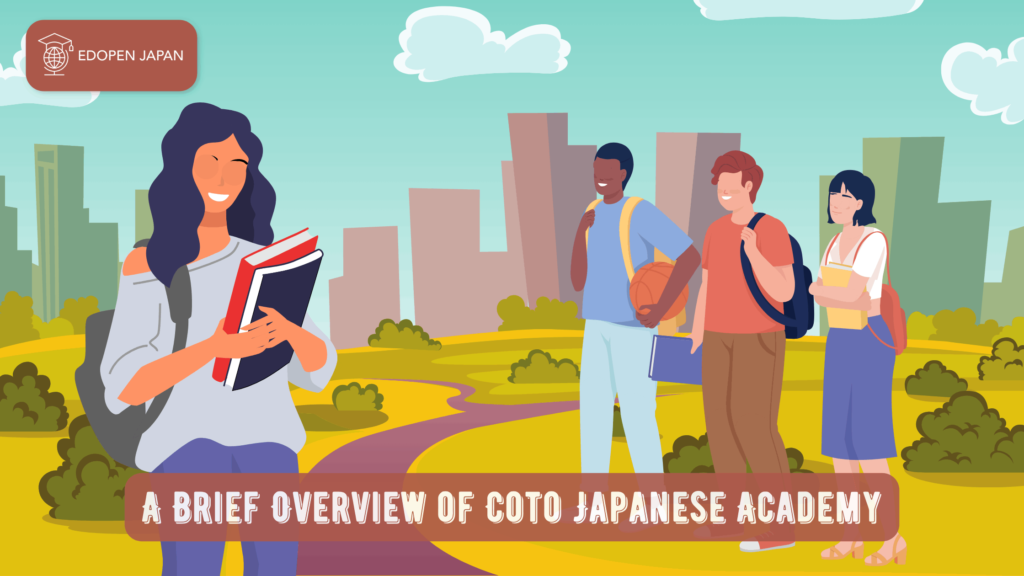
The “Coto Japanese Academy” was founded in 2000 by a team of Japanese teachers who volunteered to assist expatriates living in Japan. The school aims to help students learn practical Japanese that exceeds textbook knowledge and equips them with the skills necessary to succeed in Japan. The school emphasizes practical conversations to provide students with abundant opportunities to speak and practice.
This school maintains small class sizes with a maximum of eight students. The focus is on fostering conversations to enable relational learning and individual attention for students.
All instructors are professionals, and private lessons are accessible. Flexible and complimentary consultations for courses and level testing guarantee that students receive a personalized lesson plan.
In 2009, Coto released their inaugural Japanese language textbook, Nihongo Fun and Easy, with the goal of helping students acquire the skills necessary for a comfortable life in Japan. This textbook’s easy-to-understand format has made it widely popular among Japanese learners.
Coto Japanese Academy Location
The Coto Japanese Academy offers Japanese language education with expert instructors, personalized lesson plans, and small class sizes in Tokyo, Yokohama, and online.
Tokyo
Coto Japanese Academy – Tokyo is situated just a two-minute walk from the JR Iidabashi Station. The city boasts a cozy and comfortable vibe with fashionable stores and a wide variety of embassies. The classrooms are well-lit, lounges are cozy, and modern amenities make learning a fun and effective experience. Professional Japanese teachers will guide your learning experience in the best possible environment while enjoying life in the bustling metropolis of Tokyo.
Yokohama
Coto Japanese Academy – Yokohama is conveniently located within a 10-minute walk from Yokohama Station. The vicinity includes several schools, providing an optimal learning environment. The Yokohama branch places high importance on creating enjoyable and motivating small-group Japanese language courses.
Student Demographics
The Coto Japanese Academy has nearly 60% of its student body hailing from Europe and North America, while the remaining portion originates from Asia, South, and Latin America. The majority of students attend for the purposes of work, visiting family, or for short stays.
| 1. Europe | 60% |
| 2. Asia | 30% |
| 3. North Central South America, Latin America, and other countries | 10% |
Educational Philosophy of Coto Academy

The school upholds the principle of “Teaching as a Team”. This entails teachers breaking down complex ideas into smaller parts to aid student understanding, sharing insights, and discussing ways to help students improve. “Coto Japanese Academy” embodies this educational philosophy and incorporates it into its teaching approach for the betterment of its students.
Original Teaching Material
The school provides an extensive variety of authentic teaching materials that specialize in enhancing conversational skills across all levels. The aim is to offer a natural and practical Japanese education, which can solely be achieved by native speakers. The collection includes various published literary works.
Focused on Communication
Focus on improving conversational skills since it is the most important language skill that can be honed through Japanese lessons with native speakers.
Assessments and Concrete Lessons Plan
The school pays careful attention to the Japanese language skills that companies expect of their employees and analyzes the current level of students through a conversation assessment test in order to plan lessons to help students reach the desired level and to monitor and report progress through regular assessments.
In addition, this academy has an original and unique policy in the classroom. This is a student-first teaching philosophy where the class should be:
- Fun and encouraging as well as culturally supportive.
- Mutually beneficial for the teacher and the student
To achieve this goal, the Coto Japanese Academy trains its teachers with the following 5-point philosophy; always encourage teachers to create fun and engaging lessons, encourage the teachers to lead the class so students can talk and practice, support the teachers to always find ways to improve their teaching, train teachers to encourage their students to actively communicate in class and remind the teachers to always be flexible and adapt to students’ needs.
The Main Features of Coto Japanese Academy
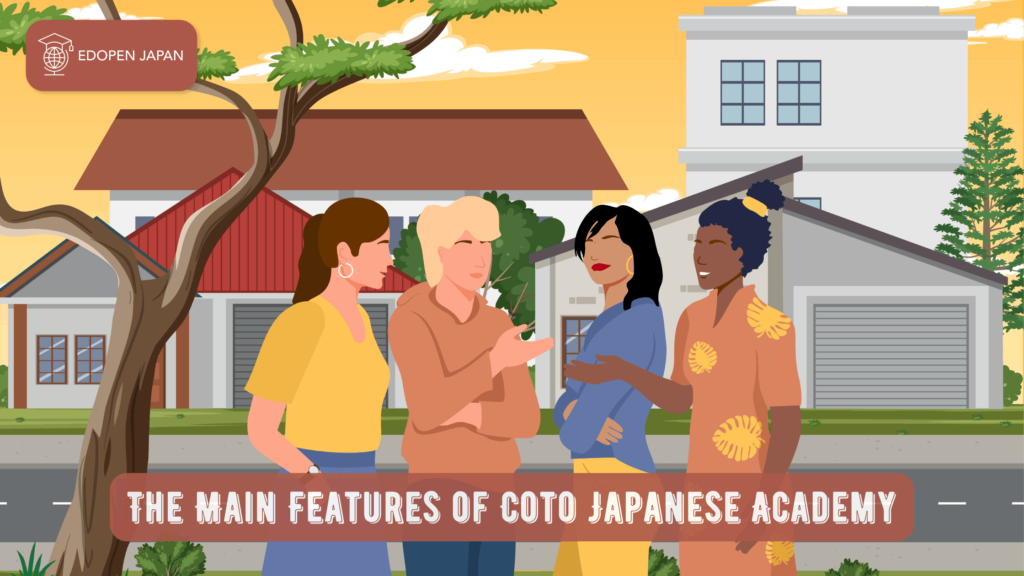
The Coto Japanese Academy has aided 5,000 non-native Japanese speakers in enhancing their communication skills. The academy is certain in its ability to furnish professionals with an all-encompassing solution to acquire the Japanese language.
What are the features of the top-ranked Japanese language school? Kindly refer to the table below for details.
| 1. Variety of Levels and Courses | Teachers are native Japanese speakers with professional qualifications and extensive teaching experience. All of them understand basic conversational English. |
| 2. Flexible Scheduling | The school provides beginners, intermediate & advanced level. |
| 3. Class Size | Small class sizes – 8 students maximum – allow for relational learning and personal attention. |
| 4. Professional Teachers | The school focuses on helping students acquire practical conversational skills, so more class time is focused on speaking. 70% of class time is focused on speaking. |
| 5. International Environment | The school has students from over 35 countries each year. It accepts students, regardless of their knowledge and background. |
| 6. Japanese Course Style | 7. Recognized by the Association for the Promotion of Japanese Language Education |
| You have the opportunity to do this in cooperation with volunteers, universities, and high schools. You will have many opportunities to make Japanese friends in your generation. | The school can help you apply for your student visa (student visa). |
| 8. Various Activities | You have the opportunity to do this in cooperation with volunteers, universities, and high schools. You will have many opportunities to make Japanese friends in your generation. |
The Courses and Expenses at Coto Japanese Academy
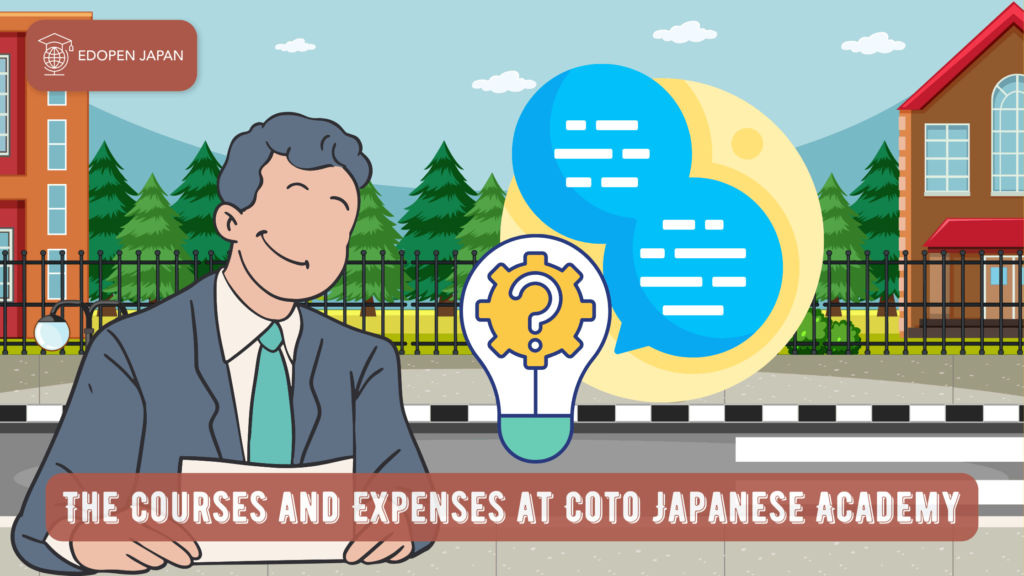
The Course
The Coto Japanese Academy offers long-term and short-term courses as well as many other types of courses. Part-time courses and private courses, in particular, are among the most popular courses for students at this school.
Japanese Course
| In a small group (maximum 8 people), with emphasis on speaking. Covering a wide range of levels, topics, and skills. | Focus on practical spoken Japanese for daily life that will help you live comfortably while in Japan. |
| 2. Part-time Japanese Classes | In a small group (maximum 8 people), with emphasis on speaking. Covering a wide range of levels, topics, and skills. |
| 3. Private Japanese Lessons in Tokyo, Yokohama | Customizable lesson plan to achieve your own learning goal. Communicate professionally in the workplace, prepare for the JLPT, or simply achieve a natural fluency for daily life, |
| 4. JLPT Courses | Targeted Japanese language instruction prepares you to succeed on the exam. Using a mix of in-house and hand-picked materials. |
| 5. Lite Intensive Course | Meet 2x per week for 100 minutes and provide a perfect balance of flexibility and intensity for working professionals. |
| 6. Kids Japanese Class | Combines learning and fun activities for your kids so they look forward to each class visit. |
Online Lessons
| 1. Online Private Japanese Classes | Learn Japanese with speaking and learning sessions with a native speaker and a professional teacher |
| 2. Online Group Japanese Classes | Structured on 18 different levels and types of lessons. From beginners who want to learn Japanese for the first time to advanced learners. |
| 3. Online Kids Japanese Classes | Online Japanese course for children (6-15 years) that is highly effective and fun at the same time. |
| 4. Online JLPT Video Lecture Course | Covers all essential grammar and vocabulary for JLPT levels N1, N2, and N3. Seminar-style lectures let students work individually with class material. |
| 5. Self-Study Courses | You can learn whenever you want with online videos. |
The Course Expenses
Intensive Course
| 1. 1 Week | ¥35,000 |
| 2. 4 Weeks | ¥120,000 |
| 3. 3 Months | ¥324,000 |
| 4. 6 Months | ¥576,000 |
Part-time Course
| 1. 8 Lessons with 2 Lessons/week | ¥18,000 |
| 2. 16 Lessons or 4 Lessons/week | ¥32,000 |
Private Japanese Lesson
| 1. 8 Lessons or 3 Months | ¥38,400 with ¥4,800/50 mins per lesson |
| 2. 16 Lessons or 6 Months | ¥74,400 with ¥4,650/50 mins per lesson |
| 3. 32 Lessons or 8 Months | ¥144,000 with ¥4,500/50 mins per lesson |
| 4. 48 Lessons or 12 Months | ¥208,800 with ¥4,350/50 mins per lesson |
Other Courses
| 1. JLPT Course: 16 Lessons or 4 lessons per week | ¥32,000 |
| 2. Lite Intensive Course: 100 minutes for 2 times/week | ¥32,000 |
The Activities and Review of Coto Japanese Academy
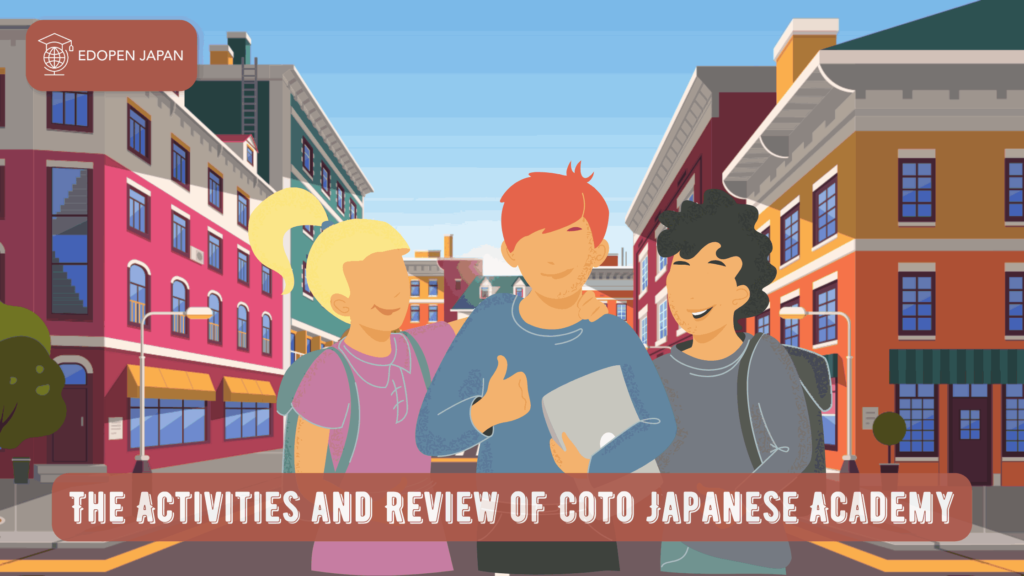
Activities
The school offers not only classes but also a variety of activities to give students a chance to learn about Japanese culture each month. These activities include parties, lunches, cooking classes, calligraphy workshops, and Kabuki performances. You can participate in these events anytime to hone your Japanese skills and gain valuable experience.
Review
The Coto Japanese Academy has a lot of good ratings and comments, as a reference from Google reviews, Coto Academy gets 552 reviews and gets a rating of 4.8 out of 5 stars. This shows that Coto Academy is a trusted institution as a place to learn Japanese and from the reviews, it can be summarized that Coto Academy is an ideal place for foreigners to learn Japanese with no basic Japanese at all.
Conclusion
Coto Academy is a pioneer in the novelty of Japanese language learning techniques, with many young and experienced teachers, and a learning atmosphere by keeps up with the times of the digital era now, so it is the choice of several foreign students from all over the world. It’s truly best that Coto Academy is your first choice for enrolling in a Japanese language school.
